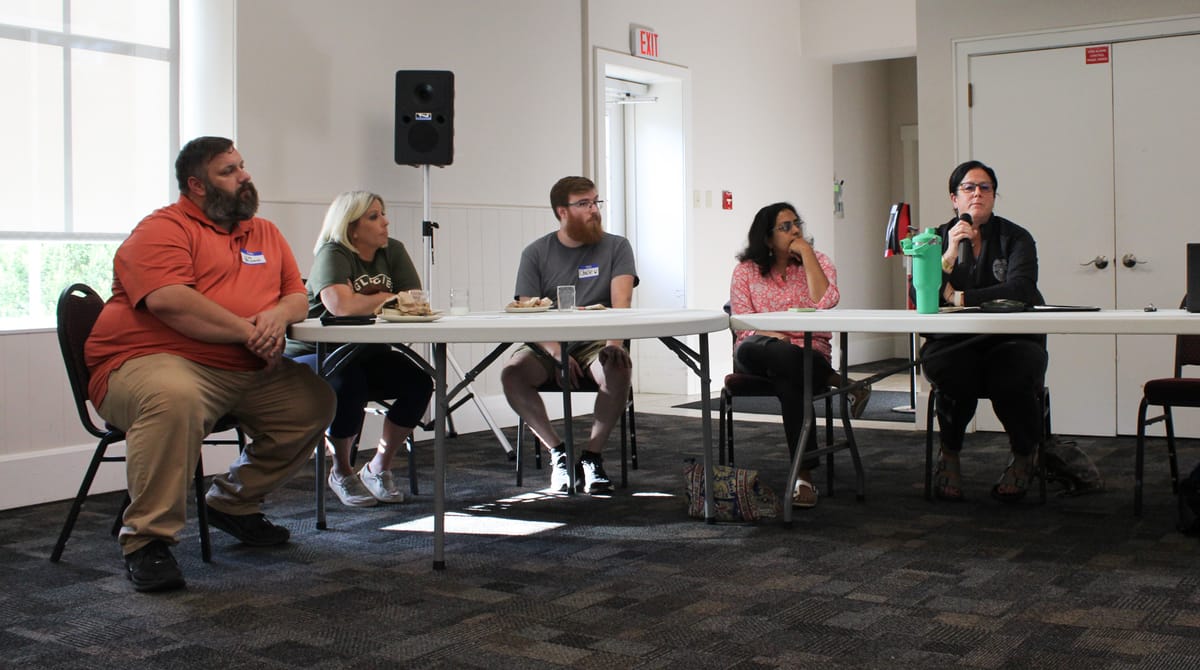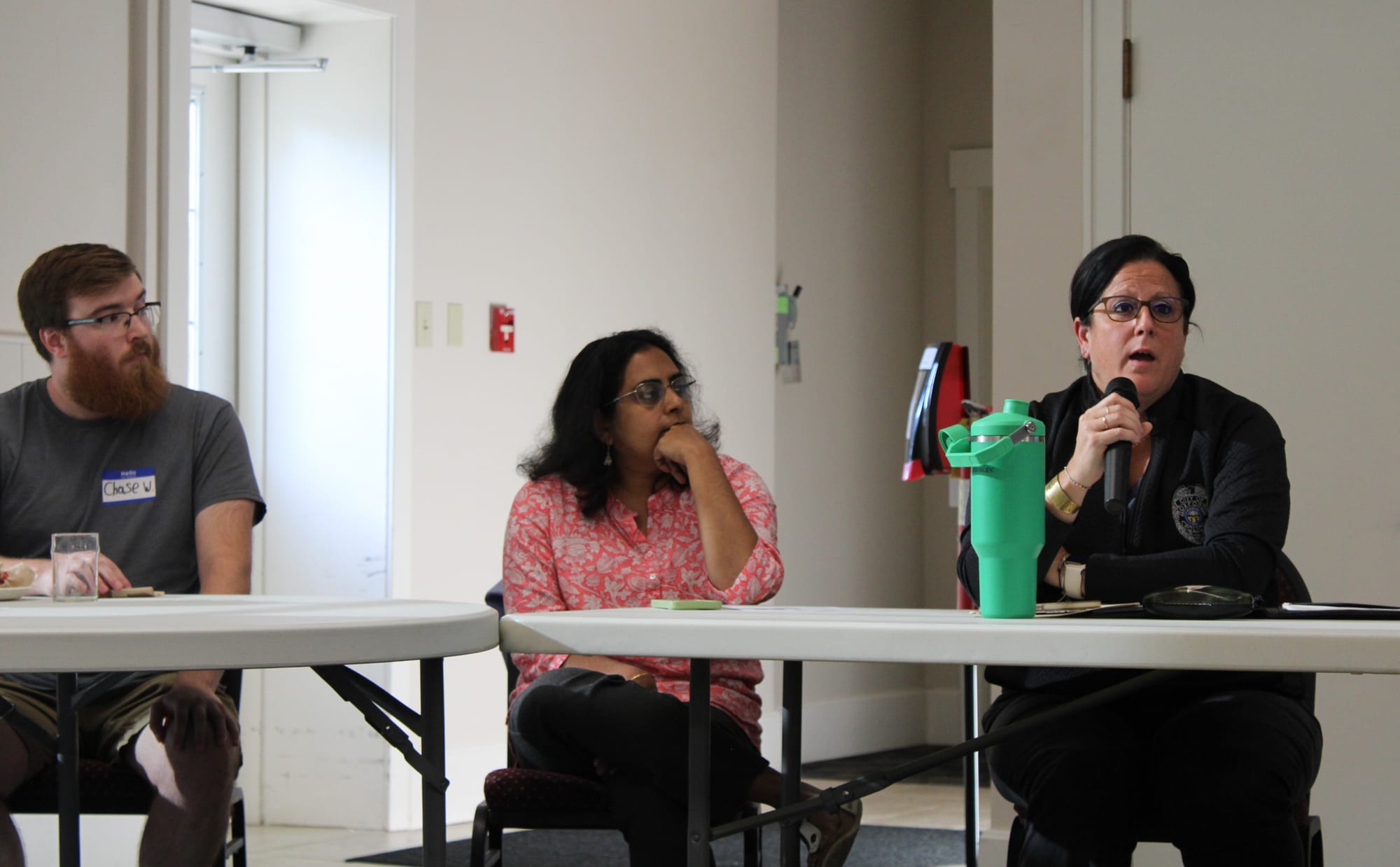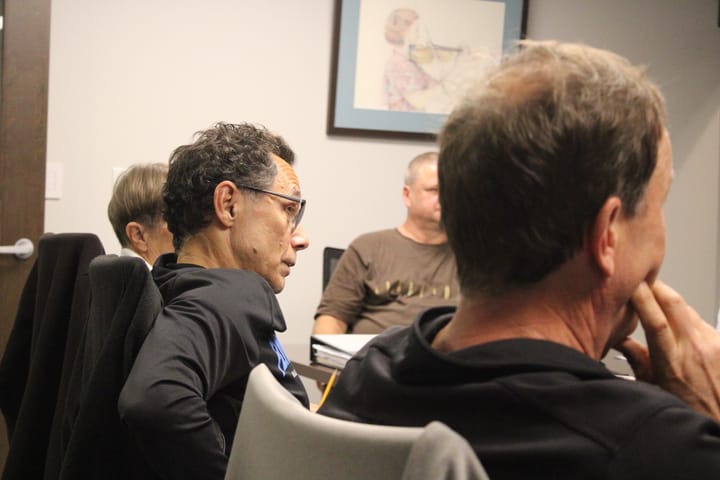Oxford Area Solutions for Housing provides updates, brainstorms cold shelter details
The Oxford Area Solutions for Housing (OASH) board hosted a panel discussion Monday with local stakeholders in social and emergency services to provide updates on and brainstorm ideas for a cold shelter planned for the end of 2025 and beginning of 2026.

The Oxford Area Solutions for Housing (OASH) board hosted a panel discussion Monday with local stakeholders in social and emergency services to provide updates on and brainstorm ideas for a cold shelter planned for the end of 2025 and beginning of 2026.
The project, currently called the “Oxford Cold Shelter,” is led by OASH and members of local faith organizations and will include 22 beds for people in the area who are experiencing homelessness during the months of December through February.
The shelter will only be open to adults, while families with children will be placed in either an Airbnb that was volunteered for the project or a hotel.
Funding for the project was approved by the Oxford City Council during a regular meeting Tuesday. Oxford Vineyard Church was made the fiscal agent for the project, for which council budgeted $70,000. The funds, which will come from interest earned from the American Rescue Plan Act, will be granted in early October.
Jenny Bailer, a member of the planning group, said during the OASH meeting Monday a rental property near H&R Block on College Corner Pike is being considered for the shelter. If the location is not secured, she said the shelter could be rotated between four local churches.
Attendees at Monday’s meeting heard points and questions about opening the shelter from representatives of the Oxford Police Department (OPD), Talawanda Oxford Pantry & Social Services (TOPSS), Projects for Assistance in Transition from Homelessness (PATH), the Butler County Commission and the Butler County Emergency Management Agency (EMA).
Ashlea Slieman, social services liaison for OPD, said one of the department’s challenges in the past with finding shelter for people is navigating mental health and substance abuse concerns, personal items and pets. Slieman also recommended OASH consider police departments from neighboring towns who might want to bring people to the shelter.

Chase Walter, the new housing stability coordinator at TOPSS, was shelter liaison for the organization last year. He listed some of the issues the organization had for OASH to consider and said TOPSS is also working on helping those who are sheltered to obtain documents like IDs, birth certificates, social security cards and other resources which could help them get jobs.
Nicola Rodrigues, director of social services at TOPSS, said for her organization, it’s important for services to be client-centered and compassionate, allowing the client to lead. She said TOPSS was previously able to find housing for nine households, whom they’re still working with.
Rodrigues said TOPSS could assist with food and any services the organization already provides on a regular basis, including assisting with first month’s rent and deposits.
Bailer said the goal would be to not necessarily have all 22 rooms filled for the three months, but instead rotate clients through them as they’re able to find other housing solutions.
“Our concept is that social services will be provided during the day, and that as many people as possible who can move on to other locations will be moved on, and then that space will be available to someone else,” Bailer said. “We’re not planning this to be a permanent shelter. This is a short term emergency shelter until something better is figured out.”
Sarah Peters, a member of the Butler County PATH team stationed in Hamilton, said through her team, clients can be signed up for mental health services and receive a case manager. She said the PATH team can also help with clothing, shoes, food and “warm packs” filled with necessities for cold weather, and she has a contact to help with expunging records if needed.
When asked about transportation, Peters said her team offers some rides if requests are made in advance, and the PATH team can set up clients with the Regional Transit Authority or other transportation services as needed.
Jim Bolen, a representative of Butler County EMA, said OASH should consider changing the “Oxford Cold Shelter” name, as cooling and warming centers have different meanings from short-term shelters to emergency services that could affect how clients are brought to the shelter.
Other recommendations were made by the panel, including on ways to set rules and the possibility of installing lockers.
One attendee asked the panel how long it takes for someone to get into permanent supportive housing. Peters said there isn’t an exact time frame, although some clients on her list have been waiting for years, but the clients are prioritized based on the amount of time spent without housing.
Bailer said during the meeting she has had discussions with other groups who may be able to provide resources for those staying at the shelter.
OASH said, moving forward, committees assisting with planning for the shelter will identify best practices and put together policies. To contribute to the project, the group has created a volunteer sign-up link. More information may be found at oashox.org/cold-shelter-planning-for-winter-2025.
“Our role is advocating, and we’ve done a great job of advocating with the city, with other faith communities, working with TOPSS, who operated the shelter in the past,” Ann Fueher, facilitator for Oxford Citizens Peace and Justice and member of the Housing Advisory Committee said.
“And so it’s going to happen, but there’s a lot of decisions to be made, a lot of recruitment of volunteers to be done, and this is an opportunity to be involved in something that I’m very excited about.”




